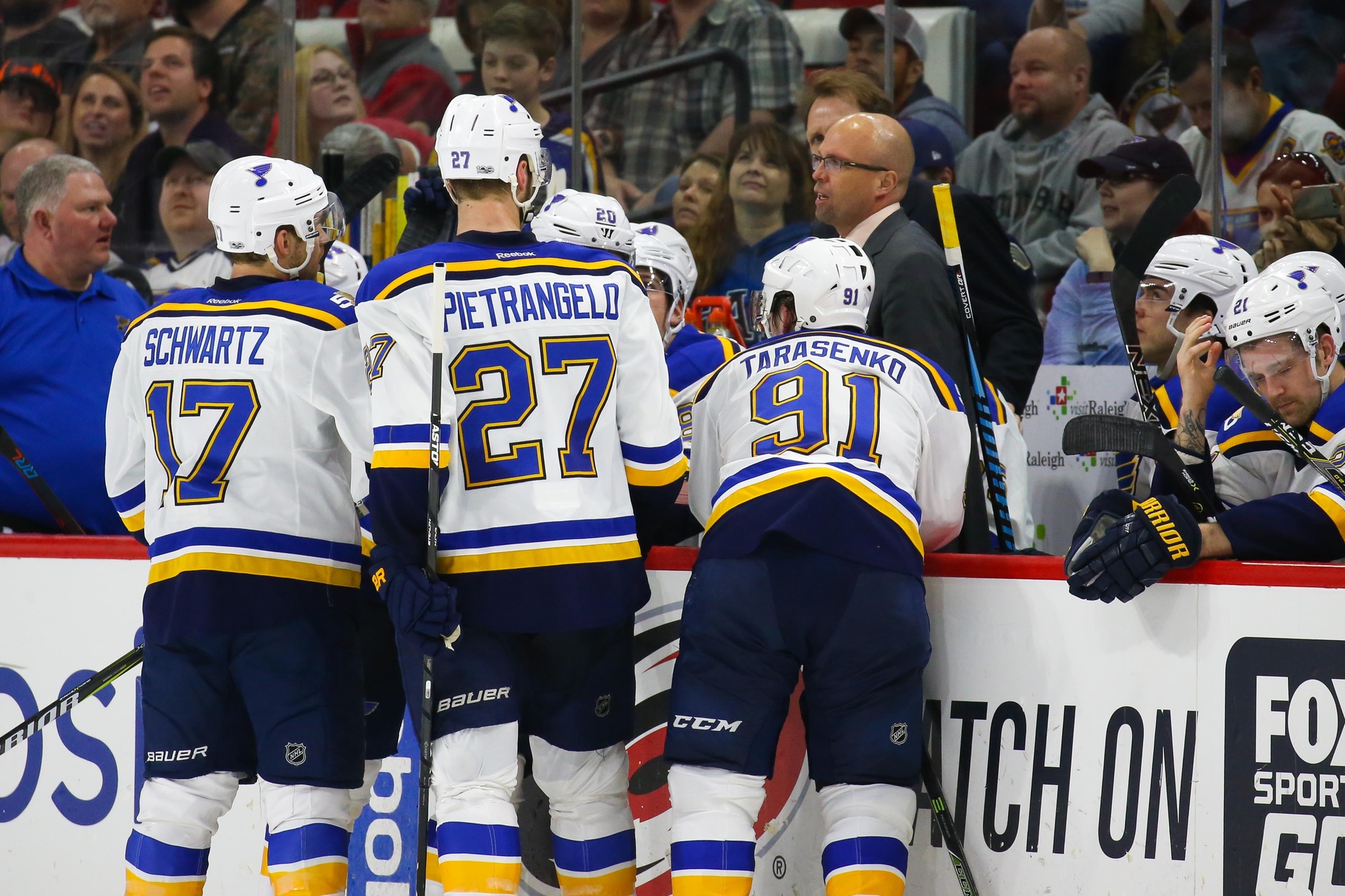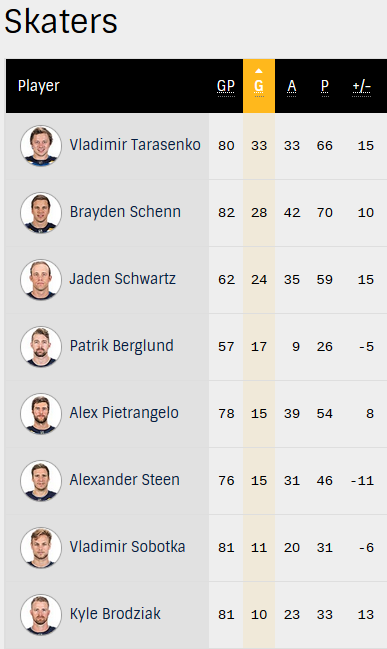The article below is a guest post courtesy of Geoff Upchurch. Give him a follow on Twitter @GeoffUpchurch.
The ride is over.
It seems like just yesterday that this team was on a six-game winning streak. Or was it a seven-game losing streak? Or, wait, was it a spectacularly awful December and January that saw the wheels fall off of the scoring and goaltending simultaneously? Or, or, or, if we reach back just a bit, was it a team on fire, plowing into mid-November with one of the best records in the league?
Undoubtedly, it was a ride. Not all of it was fun, certainly, but it left the Blues with a chance to play their way into the postseason in the last game of the year. A chance that they didn’t capitalize on, but a chance nonetheless.
All of which raises the questions: What went so wrong that the team missed the playoffs? and What can they do to fix it?
Depth Scoring
The team lacked this in spades, and it was brutally obvious for most of the year once the defense stopped propping up the score sheet in mid-November. The Blues scored 223 goals as a team (the 226 on the NHL’s standings page includes the three “goals” credited for three shootout wins), better than only seven teams in the league. Of those seven teams, the next highest point total after the Blues’ 94 was Calgary’s 84.
Looked at from the other side, the lowest goals-for total for a playoff team was Anaheim’s 231, and the team that just put the Blues out, Colorado, mustered 255.
Of those 223 goals, Tarasenko scored 33 of them, Schenn added 28 more and Schwartz another 24 – a combined 38% of the team’s total goal output. The rundown, exclusive of Stastny, who isn’t on the Blues stats page, looks like this:
Solid third-liner numbers (and a good offensive season from a defenseman tucked in there), but after the top three, there’s no real threat. The fact that Brodziak ended up centering Steen and Berglund as a second line after the Stastny trade brings this issue into brutally clear focus.
What can they do to fix it?
A retooling of the middle six has to be in the offing. Given the contract status of a lot of the names on this list, though, it’s either going to have to come internally, or via trade, with some of these names moving out to make the cap work along with less-expensive sweeteners for the deals.
The Power Play
I’m not going to belabor David’s point too much. The lowest PP% of a team that did make it in was Anaheim, at 17.8 (2.4 better than the Blues 15.4), and then the Wild, at 20.4. It also helps illustrate the point above about a lack of depth talent and scoring, with the most common forwards on PP2 being Berglund, Sobotka and Barbashev. Those three forwards had three power play goals between them this season, and they all belong to Berglund.
What can they do to fix it?
Fix their scoring depth so that they can actually field two decent PP units. Change the PP strategy. Bring in a new coach for the power play.
The Goaltending
Nothing expressed the Jekyll and Hyde nature of this Blues team better than the goaltenders: The mild-mannered Jekyll analogue in Hutton, who routinely bailed the team out and inspired their play in front of him; and the chaotic stops everything/can’t stop anything swings of the Hyde analogue Allen. Hutton parlayed 26 starts and 32 total appearances (1,610 minutes played) into a 2.09 GAA and a .931 save percentage. Allen, the nominal #1, started 56 games, appeared in 59 (3,317 minutes played), and posted a 2.75 GAA and .906 sv%.
Of goaltenders with at least 2,000 minutes played this season, which encompasses 34 goalies, Allen’s GAA ranks 18th, and his sv% 30th.
What can they do to fix it?
Score more goals than the other guys. Andersen, Bernier, Murray, Schneider, and Holtby are all playoff-bound while sporting a worse GAA than Allen. Murray equals Allen’s .906 sv%, while Holtby and Schneider are one point better at .907.
Alternative One: Walk back the idea that Allen is the #1, and play him in a 1A/1B situation, either with a re-signed Hutton, or Husso, or a goalie to be named later.
Alternative Two: Find a team that wants to take a chance on Allen as a change-of-scenery candidate, and use Husso and a veteran backup (Hutton would still fit nicely, if he’d like to come back without breaking the bank) going forward.
Getting Points In Losses
The Blues got six points on overtime/shootout losses this season. Only Tampa had fewer with five. Aside from Edmonton (also six), the rest of the low-end of the OT/SO loss cadre reads as a who’s-who of playoff teams: Pittsburgh, Columbus, Toronto, Washington, Vegas, LA. All of which sounds good, until you consider that Colorado took nine of their losses to OT or the Shootout. Remember that one point the Blues missed by? You can just as easily say that Colorado earned it here, as the Blues failed to earn it here.
One obvious recent example is the last home game against the Hawks. The Blues needed to hold on for less than 10 seconds to earn a point, and failed to do so. It’s part and parcel of the team’s inability to be prepared to open periods or close them out, also on display recently, with the first goal given up to Colorado in the last game of the year.
What can they do to fix it?
If I knew, I’d get the Blues to pay me a boatload of money to fix it. More seriously, it seems like either a failure of effort or a failure of coaching, in which case the fix sounds simple (and isn’t): Either change the players or change the coach.
I’m sure I haven’t touched on everything here. I left off the injuries, which coincided with a couple of substantial down-turns in the season (Schwartz, Edmundson). I left off the defense, which was more of a mixed bag than expected. I left off the depressingly high numbers of short-handed goals against while looking at the already-anemic power play. Suffice it to say, this is a Blues team that needs to make substantial changes this off-season if they don’t want to repeat the follies of this season next year.
Your move, Doug Armstrong.
Add The Sports Daily to your Google News Feed!

